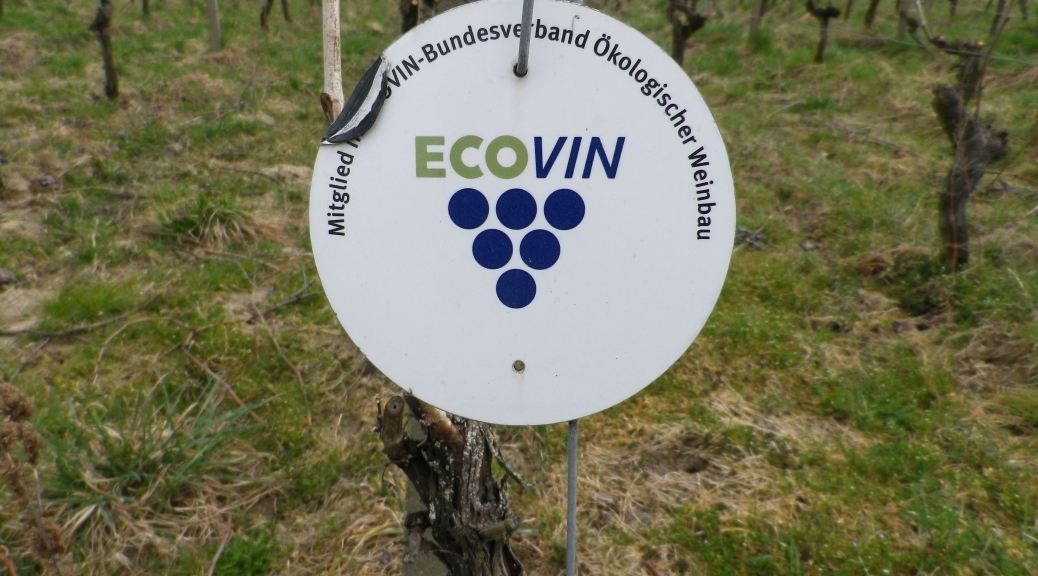What I Learned:
The Breisgau area of the Baden Region of Germany has some unique topography, both natural and manmade. From the plain, you see ridgeline after ridgeline, each rising higher as it moves away from the Rhine, and toward the upper reaches of the Black Forest to the east.
The vine-covered hills, usually on the first or second ridgelines after the plain, tend to be small, but steep. Man has worked around this by terracing many of them over time. This terracing provides plenty of opportunity to notice the primarily loess and sandy soils that predominate in this area.
Within this district, the most famous vineyards are the Lahrer Kronenbuehl and Schutterlindenberg, both along the Breisgauer Weinweg trail, and the Malterdingen Bienenberg.
As noted on a signboard seen in the vineyards near Mundingen, Roman writers, and archeological finds attest to winemaking taking place on the left bank of the Rhine beginning in Roman times. (These sources identify areas in Alsace and the Pfalz.) On the right bank of the Rhine, winemaking can be definitively dated to the Carolingian era, around 781 A.D., in the Kaiserstuhl.
The signboard went on to note: The first written mention of vineyards in Heimbach and Koendringen (both even further east from the Rhine than the Kaiserstuhl district), dates to 1307, although it may be supposed that it actually occurred much earlier.
In some places though, indications are that planting vines might be fairly recent. In Glottertal, passing by an historic vintner’s hut, known as the Rebhaeusle, I noted that the vineyards in this valley were first planted from 1868.
This district produces red and white wines, in almost equal quantities. Mueller-Thurgau is the most planted white varietal, followed by Rulaender (Grauer Burgunder/Pinot Gris), and then Pinot Blanc. The Pinot (Burgunder) varietals are widely planted here. In fact, according to the Weinlandbreisgau.de site, the Blauer Spaetburgunder (Pinot Noir) constitutes a whopping 42.9% of all wine made in the Breisgau. Combined with the Pinot Blanc figure of 9.5% and the Pinot Gris figure of 12%, this means that the Pinots themselves constitute over 60% of all wine from this area.
Most planted varietal in the Breisgau area around Kippenheim is the Spaetburgunder. Other areas within the Breisgau grow the red varietals of Regent (developed in 1967 in the neighboring Pfalz wine region) and Cabernet Mitos, and Riesling and Chardonnay as other white varietals. All other grapes grown constitute less than one per cent of the total.
What I Tasted:
2012 Spaetburgunder Rose, Qualitaetswein, Kippenheimer Haselstaude, Winzergenossenschaft Kippenheim Mahlberg Sulz, Baden: a light-colored, pleasant rose, semi-dry, with a light mouthfeel.
2011 Regent, trocken, Qualitaetswein, Kippenheimer Haselstaude, Winzergenossenschaft Kippenheim Mahlberg Sulz, Baden: a dry red wine, with a dark red color; Was served chilled by the vintner; Berry taste, with a hint of oak coming through; Slightly sweet after-taste; Lighter mouthfeel than expected.
2011 Spaetburgunder, trocken, Qualitaetswein, Ettenheimer Kaiserberg, Weingut Jaeger, Baden: a dry red wine with a medium red color; smoky flavor, some oak comes through, berries with a hint of vanilla.
2013 Weissburgunder, trocken, QbA, Weingut Moosmann, Buchholz, Baden: a dry white wine with light gold color; pear and white stone fruits notes, and a hint of citrus; medium acidity.
2012 Weissburgunder, trocken, QbA, Buchholzer Sonnhalde, Weingut Nopper, Baden: a dry white wine with medium gold color; an intriguing mix of floral, mild honey flavors, yet still slightly tart.
2012 Weissburgunder, trocken, Qualitaetswein, Ettenheimer Kaiserberg, Weingut Jaeger, Baden: a dry white wine with medium gold color; citrus flavors with a full mouthfeel.
2011 Grauburgunder, trocken, Qualitaetswein, Ettenheimer Kaiserberg, Weingut Jaeger, Baden: a dry white wine with light gold color; floral notes with a trace of minerality, and a full mouthfeel.
